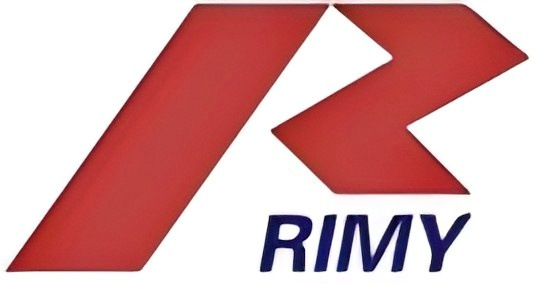The Evolution of Modern Motor Manufacturing Automation
The landscape of motor production line systems has undergone a remarkable transformation in recent years. As we approach 2025, manufacturing facilities worldwide are embracing sophisticated automation solutions that revolutionize how motors are designed, assembled, and tested. This comprehensive guide explores cutting-edge practices that are reshaping the industry and setting new standards for efficiency, quality, and productivity.
Today's motor production line integrates advanced robotics, artificial intelligence, and smart sensors to create seamless manufacturing processes. These technological innovations have not only improved production speed but also significantly reduced errors and wastage, making motor manufacturing more sustainable and cost-effective than ever before.
Core Components of Advanced Motor Production Systems
Smart Robotics and Precision Assembly
Modern motor production line facilities leverage collaborative robots equipped with vision systems and advanced sensors. These robots excel at intricate tasks such as winding coils, inserting magnets, and assembling delicate components with unprecedented precision. The integration of machine learning algorithms allows these systems to adapt and optimize their performance continuously, reducing cycle times while maintaining exceptional quality standards.
The implementation of smart robotics has transformed traditional assembly processes, enabling manufacturers to achieve consistency levels that were previously impossible with manual operations. These systems can operate 24/7, significantly increasing throughput while maintaining strict quality parameters.
Quality Control and Testing Automation
Automated testing stations along the motor production line perform comprehensive evaluations at every critical stage. From electrical performance testing to mechanical alignment verification, these systems employ sophisticated sensors and diagnostic tools to ensure each motor meets exact specifications. Real-time data analysis enables immediate detection of potential issues, allowing for rapid adjustments and minimal downtime.
Advanced vision systems perform detailed inspections of components and assemblies, identifying microscopic defects that might be missed by human inspectors. This level of scrutiny has dramatically improved first-pass yield rates and reduced warranty claims.
Digital Integration and Smart Manufacturing
IoT Connectivity and Real-time Monitoring
The modern motor production line heavily relies on Internet of Things (IoT) technology to create an interconnected manufacturing ecosystem. Sensors throughout the production process collect vast amounts of data, providing real-time insights into machine performance, production rates, and quality metrics. This continuous stream of information enables predictive maintenance and helps optimize production schedules.
Cloud-based manufacturing execution systems (MES) process this data to identify trends, predict potential issues, and suggest optimization opportunities. The result is a more responsive and efficient production environment that can quickly adapt to changing demands and conditions.
Digital Twin Technology
Digital twin technology has emerged as a game-changing tool in motor production line optimization. By creating virtual replicas of physical production systems, manufacturers can simulate process changes, test new configurations, and identify potential bottlenecks without disrupting actual production. This capability significantly reduces the risk and cost associated with implementing process improvements.
The technology also enables remote monitoring and troubleshooting, allowing experts to diagnose and resolve issues from anywhere in the world, minimizing downtime and maintenance costs.

Sustainable Manufacturing Practices
Energy Efficiency Optimization
Modern motor production line systems incorporate advanced energy management systems that monitor and optimize power consumption across all processes. Smart algorithms adjust equipment operation based on production demands, reducing energy waste during idle periods and optimizing power usage during peak production.
Manufacturers are increasingly implementing energy recovery systems that capture and reuse excess heat and kinetic energy from production processes, further reducing their environmental impact and operating costs.
Waste Reduction and Material Recovery
Automated material handling systems in the motor production line minimize waste through precise component management and advanced inventory control. Scrap materials are automatically sorted and processed for recycling, while sophisticated planning systems optimize material usage to reduce excess inventory and waste.
The integration of artificial intelligence helps predict material requirements more accurately, reducing overstock situations and ensuring efficient use of resources throughout the production process.
Workforce Development and Integration
Advanced Training Programs
As motor production line automation becomes more sophisticated, manufacturers are investing heavily in workforce development. Virtual reality and augmented reality training programs help operators and maintenance personnel master complex systems safely and efficiently. These immersive learning experiences accelerate skill development and reduce training costs.
Continuous education programs ensure that staff remain current with evolving technologies and best practices, creating a more adaptable and valuable workforce.
Human-Machine Collaboration
The future of motor production line automation isn't about replacing humans but creating effective human-machine partnerships. Collaborative robots work alongside operators, handling repetitive or hazardous tasks while humans focus on quality oversight, process improvement, and complex decision-making.
Advanced interfaces and intuitive control systems make it easier for operators to monitor and adjust production parameters, ensuring optimal performance while maintaining safety and quality standards.
Frequently Asked Questions
What are the key benefits of automating a motor production line?
Automation of motor production lines delivers numerous advantages, including increased productivity, improved quality consistency, reduced operational costs, enhanced worker safety, and better resource utilization. It also enables 24/7 operation capabilities and provides detailed data analytics for continuous improvement.
How long does it typically take to fully automate a motor production line?
The implementation timeline varies depending on the complexity and scale of the operation, but typically ranges from 6 to 18 months. This includes planning, installation, testing, and staff training phases. A phased approach is often recommended to minimize disruption and ensure smooth transition.
What level of maintenance is required for an automated motor production line?
Modern automated production lines require regular preventive maintenance, typically scheduled during planned downtime. However, predictive maintenance systems using IoT sensors can significantly reduce unexpected breakdowns by identifying potential issues before they cause failures, resulting in higher overall equipment effectiveness.

